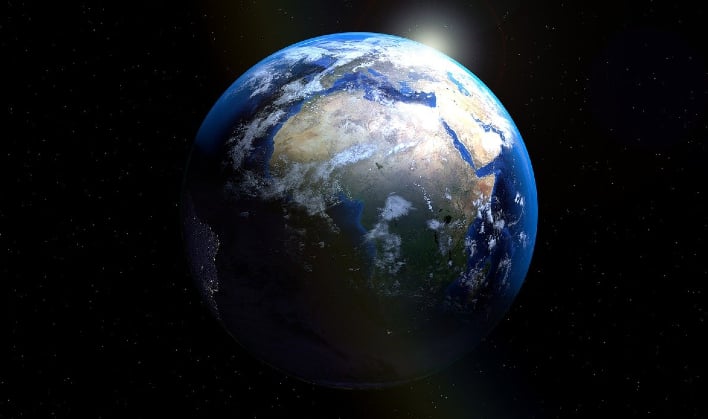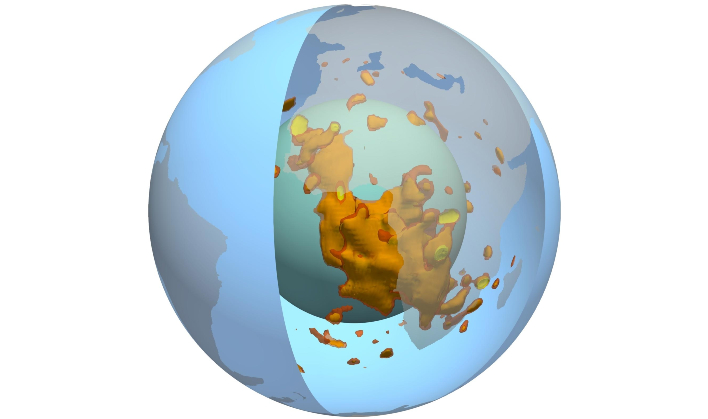Two Giant Blobs Discovered In Earth's Mantle Have Scientists Baffled

Earth is made up of layers. It is comprised of an outer crust, a thick viscous mantle, a fluid outer core, and a solid inner core. It is within the mantle that scientists have been studying two colossal blobs, properly referred to as Large Low-Shear-Velocity Provinces (LLSVP's). Both are the size of a continent and are said to be 100 times taller than Mt. Everest. One of the blobs is located beneath the African continent, while the other resides under the Pacific Ocean.
In the study recently released in Nature Geoscience, scientists are using instruments that measure seismic waves and describe the blobs as having complicated shapes and structures. However, in spite of the their distinguished features, very little is known about why these blobs exist or what led to their unique shapes.
While studying the blobs, scientists discovered that the blob under the African continent is about 621 miles (1,000 km) taller than the blob beneath the Pacific Ocean. Researchers believe this is because the blob under the African continent is less dense, and therefore less stable, than the one under the Pacific Ocean.

In order to come to that conclusion, research was conducted by running hundreds of mantle convection model simulations. The team ran comprehensive tests as to the effects of key factors that may affect the height of the two blobs. This included the volume of the blobs and the contrast of density and viscosity of the blobs in comparison to their surroundings. The result indicated that in order to explain the differences in height, the African blob must be of lower density than the blob under the Pacific Ocean. This seems to also indicate that the two may have different composition and evolution.
"The Africa LLVP may have been rising in recent geological time," co-author Mingming Li of the School of Earth and Space Exploration stated. "This may explain the elevating surface topography and intense volcanism in eastern Africa."
"Our combination of the analysis of seismic results and the geodynamic modeling provides new insights on the nature of the Earth's largest structures in the deep interior and their interaction with the surrounding mantle," wrote co-author Qian Yuan. "This work has far-reaching implications for scientists trying to understand the present-day status and the evolution of the deep mantle structure, and the nature of mantle convection."

